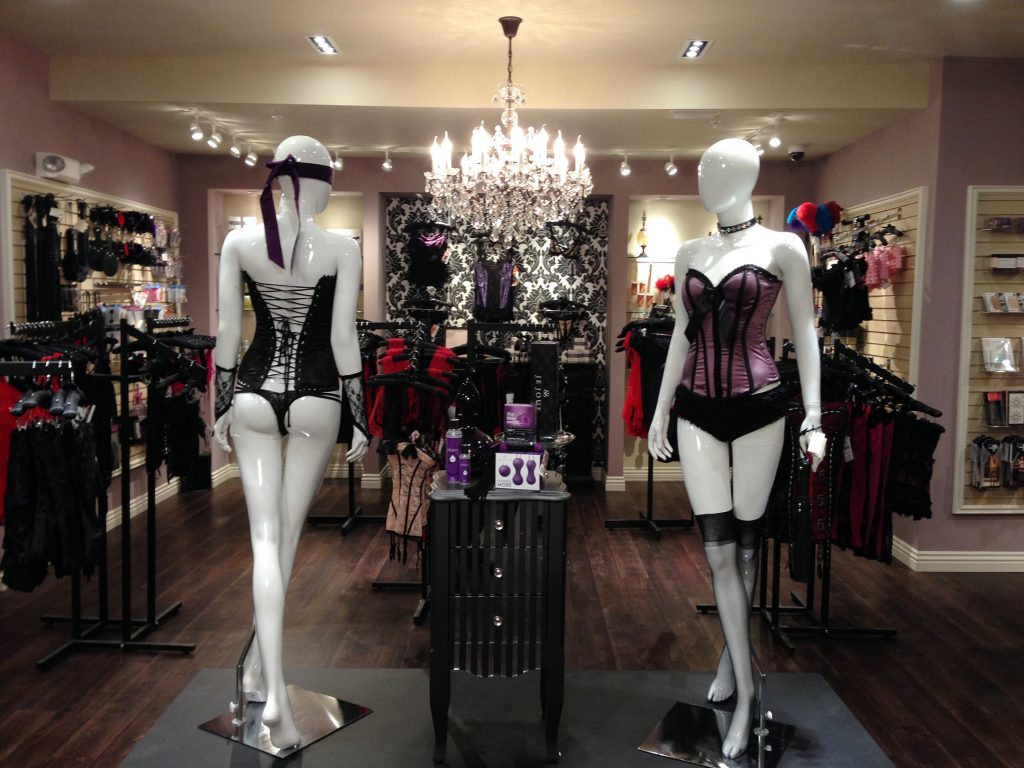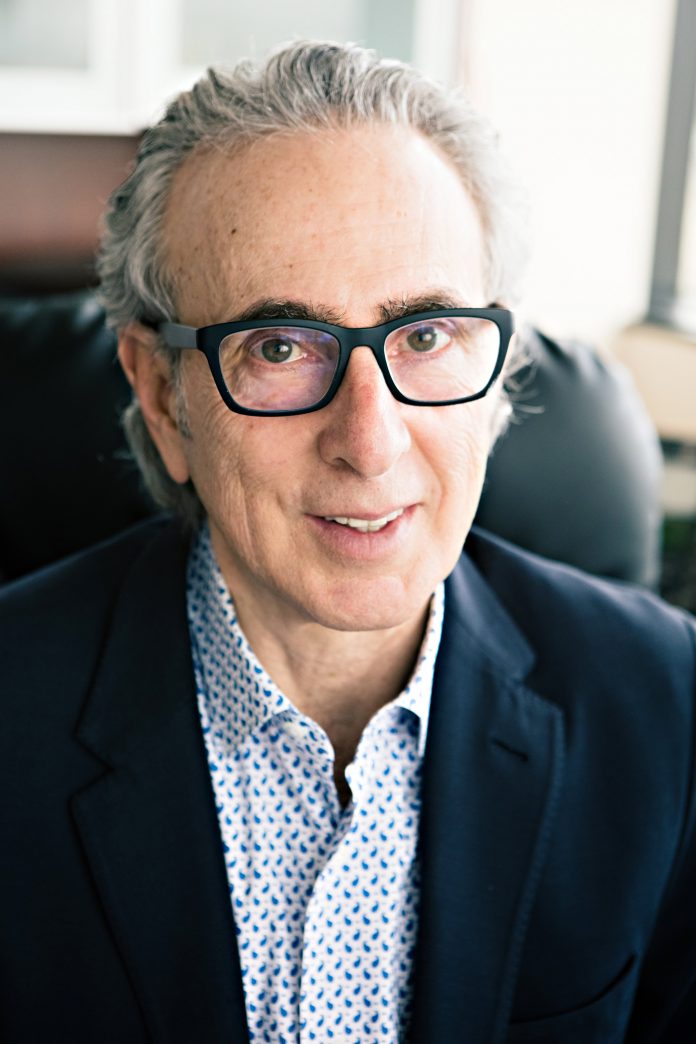(Note: This story appears in the June 2022 issue of SE Magazine)
*Story by Larry Kaplan
Good Vibrations president Joel Kaminsky has worked tirelessly to provide a curated product selection while never losing sight of the brand’s educational footprint.
G
ood Vibrations President Joel Kaminsky’s brother, Mel Kamins, started working for adult retail pioneer Rueben Sturman in Cleveland around 1959. Sturman’s company distributed comic books, crossword puzzles, and some old-school nudie magazines.
Eventually, as that business grew into adult product, Kaminsky worked summers and winter vacations in Sturman’s warehouses in the ‘60s while in high school. Kaminsky continued helping out during vacations through college at the University of Cincinnati when he returned for breaks and summers. So Kaminsky was “exposed” to the adult retail business during a tumultuous time of numerous obscenity busts and the like.
During his junior year, his mother was diagnosed with terminal cancer, and after graduating in ‘75, Kaminsky returned to Cleveland to help care for her.
“I never aspired to stay in this industry; I wanted to work in the medical field,” says Kaminsky. “But I needed a job while caring for my mom, who was given about six months to live. My brother said they needed help running the stores and offered to give me a Monte Carlo to drive and $200 a week.
“I accepted and helped run 10 stores in Western Pennsylvania, West Virginia, and the Cleveland area,” he adds. “I thought I could do this for a while, then resume my education and pursue a career, whether organic chemistry or whatever. My mom kept hanging on; she didn’t pass away until 1977.”
By then, Kaminsky had been working the stores for a year-and-a-half. He was getting paid more and excelled at the business part of things.
“I related to the marketing aspect of a previous part-time high-school job working at Chicken Delight,” says Kaminsky. “When we sold one piece of chicken for 70 cents and three for $1.99, I understood that we were making less margin but more profit. I looked at how we could do that in the stores. If we’re selling one movie for $20, we should sell three for $49.99. Long story short, Reuben took notice of me, and my mom passed away. I was at a turning point and was offered the opportunity to go to San Diego and take over a few stores that an operator named Flip Fishman owned and open other stores and given a budget. I developed the San Diego area in the late ‘70s and early ‘80s. Some of those stores are now Romantix stores.”

SE Magazine spoke with Kaminsky about the long and winding road that led him to become president of Good Vibrations.
SE: How did you end up in the Bay Area and eventually running Good Vibrations?
KAMINSKY: Reuben’s son, David, had an opportunity to take over some stores that Paul Wisner had in the Bay Area. I got a call at the end of ‘83 asking if I’d be interested in helping David run those stores and the company. So in January ‘84, I moved to San Francisco, becoming the COO of David’s company, Bay Management, where I worked for the next 18 years. David was always very good to me, and then, in 2002, my brother announced his retirement, and his daughter, Rondee, was to be his successor. Rondee and I have always been close. She needed somebody she could trust to assist her in running the company. An opportunity to work with somebody I love that much was just too good to pass up. I took the COO position, working for Rondee; it was an opportunity to return home.
That led up to a 2007 phone call with David where he explained he was talking to people surrounding buying Good Vibrations. I casually replied, “Oh, let me know if there’s something there. Maybe I’ll invest.” I didn’t think anything would come of it. I got a call-back the next day. David presented what the situation was: He said the stores don’t have anything in them; they need a product. I explained to Rondee it was an excellent opportunity for us. So I flew to San Francisco and met with David and the-then CEO of Good Vibrations, Teresa Sparks. I looked at the stores, they were empty. I thought, this is an easy fix — they just need product. Rondee had a whole warehouse full of product; David had an infrastructure in the Bay Area, and I have a store management skill-set. So I said, maybe we can do something together.
David ended up deciding not to do it. And we bought it. We put product in, and I started managing it. I ended up buying Rondee out and commuted between the Bay Area and Cleveland for three years until my house was sold. When I bought the company, they had four stores — two in San Francisco, one in Berkeley, one in Brookline, Massachusetts, and a flailing website. I struck a deal with a web platform and developed a strategy to grow the brand.
“Additionally, we go to tradeshows looking for what our customers are asking for. Often we do it backward by attending with an agenda of what we’re looking for, rather than looking at everything and then asking, which ones do we want?” — Joel Kaminsky
SE: What went into building the brand?
KAMINSKY: A house is only as good as the foundation it’s built on. I felt like I needed to change the business culture of Good Vibrations. They were very educated, great people, a great staff — but bad business people. I felt I needed better management. So I dumped most of the company’s executive management and took over running it. I put in different software and decided to work on the infrastructure, then open more stores. I didn’t understand how a brand that’s been around since 1977 only had four stores — and they only got the Brookline store by accident because somebody with a management contract on it needed help, and they ended up buying them out.
Amazon wasn’t Amazon yet as we know it today, and they were getting beat up at the time by sites like drugstore.com. So I decided to build up the web business and open stores. I opened a San Francisco location across from a mall in 2011 and a store in Oakland in 2012. We continued to grow by opening in Palo Alto and another San Francisco store in 2013. I just wanted to open a store a year for a while and grow the company. That’s what I did. I bought the Camouflage store in 2016. I bought the four Babeland stores in 2017. In 2019, I bought another little store in Santa Cruz.
At that point, we had 15 stores. But since then, with New York and San Francisco so greatly affected by COVID, I got bought out of one of my New York leases. So now I’m looking for another location in that area to replace it.

SE: Are you considering opening additional new stores?
KAMINSKY: We’re always open to acquisitions, but they have to fit where Good Vibrations would succeed. We need disposable income and an educated client base around us. An average adult store sale is often around $30-$50. Ours is closer to $80. My average web transaction is over $100. We don’t sell pills, anal desensitizers, or inhalants like Rush. We’re an educational brand with a curated product selection. When you operate like that, you’re not for every location. What might be suitable for an Adam and Eve isn’t great for us.
SE: How many Babeland’s are there?
KAMINSKY: Presently, three: one in Seattle, and one each in Manhattan and Brooklyn.
SE: Is that difficult for you logistically to build a brand with the Babeland stores spread out?
KAMINSKY: There are challenges on occasion, as far as management goes. But the reality is that COVID has brought us Zoom and Microsoft Teams and other ways we now communicate. Our buying department is buying for all the stores, so it’s not like individual stores having to do reorders. We have good management at each store. It gets difficult when we lose a manager in an outside area. It’s not as easy to send somebody from one store in San Francisco to another when you only have one store in Seattle. When the manager is sick or gives notice, there’s not somebody to plugin immediately. But we have the resources to get an Airbnb or send people up for months to help run a place.
 SE: Do you strive to open more stores in one market instead of just looking for opportunities anywhere?
SE: Do you strive to open more stores in one market instead of just looking for opportunities anywhere?
KAMINSKY: Absolutely, if the right opportunity come comes along. We always look to open stores where we already have dots on the map because we understand that market, have a client base, and understand the culture of that area. When you just go somewhere else unproven or unknown, it’s a greater risk.
SE: What are your biggest challenges in running the company?
KAMINSKY: Operationally, if we’re talking about retail stores these days, it’s getting help. For the web, it’s pricing. There’s always somebody who’s cheating on MAP pricing. COVID has brought on other challenges. People have become very distracted in the last few years and have reevaluated their lives, and that’s become a distraction to the workplace. Now that our corporate office is working a hybrid schedule, we’ve lost some of the team culture — the visceral feeling of working with one another. We’ve lost some long-time employees because of the opportunity to move out of the high cost of living here.
SE: What types of toys grab your attention first at a trade show?
KAMINSKY: Ones that are different than what’s already in the marketplace; something that performs differently than what’s already in the marketplace. In other words, innovation.
SE: With so much product coming out, how do you sift through everything to ensure that you achieve your ROI?
KAMINSKY: We don’t, we don’t pay as close attention to ROI as value to the consumer. Because ultimately, if you’re going to have something that has value to our particular consumer — whether that’s because it assists in pleasure, or helps or assists them in a disability or the like — that matters more to us. So we already know that if the product makes sense, that’s really what it comes down to. What we’re talking about is curation. When we’re sifting through everything, we’re looking for body-safety, a quality motor, and not much duplicity of what’s already in stock. If we know that we have a sensible selection of rabbit vibrators, but some are outdated, we’ll look for some different rabbit vibrators. Additionally, we go to trade shows looking for what our customers are asking for. Often we do it backward by attending with an agenda of what we’re looking for, rather than looking at everything and then asking, which ones do we want?
SE: What’s your biggest pet peeve when buying product?
KAMINSKY: The biggest peeve is the product not released when scheduled because we’re making a spot for it in our stores, and I can’t sell an empty hole?
SE: What’s the strongest trend in adult retail currently?
KAMINSKY: As far as in vibrators, the different air-pulsation products. But the other trend that’s not product-related is improved consumer education. That’s something that more stores are pushing, having a “sexpert” or doing more classes, things on which the Good Vibrations foundation was built. We’re glad to see that from our competitors.
SE: What are the most significant changes in the industry since you started?
KAMINSKY: For far too long, the industry was so male-dominated in so many ways. Movies were catered toward men’s pleasure. Toys were being developed by men; adult print media especially. What’s changed and has been nice to see is that all genders are involved today. Products are now being made and developed by people from all communities. And whether that’s the LGBTQ community, whether that’s by gender for women, for men, or the like, it’s been a pleasure to see how the industry has grown; that people are getting better educated, and there’s a lot less shame that’s associated with even going to an adult store and more interest in education. Our products are now sold by Sephora, Walmart, and drugstore shelves, but there’s still a long way to go.
Larry Kaplan has been the Legal Correspondent for ED Publications for 21 years. Mr. Kaplan is a broker in the sale and purchase of adult retail stores and adult nightclubs and the Executive Director of the ACE of Michigan adult nightclub state trade association. Contact Larry Kaplan at 313-815-3311 or email larry@kaplanstoresales.com.
















You must be logged in to post a comment.